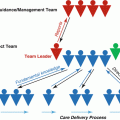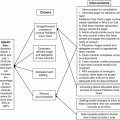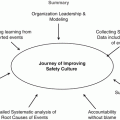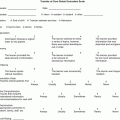Safe
Avoiding injuries to patients from the care that is intended to help them
Effective
Providing services based on scientific knowledge to all who
could benefit and refraining from providing services to those not likely to benefit
Patient-centered
Providing care that is respectful of and responsive to individual patient preferences, needs, and values and ensuring that patient values guide all clinical decisions
Timely
Reducing waits and sometimes harmful delays for both those who receive and those who give care
Efficient
Avoiding waste, including waste of equipment, supplies, ideas, and energy
Equitable
Providing care that does not vary in quality because of personal characteristics such as gender, ethnicity, geographic location, and socioeconomic status
While QI has become a widespread method for improving care, its acceptance as a rigorous scientific method has faced challenges. Traditional experimental research designs examine effects of one or two isolated interventions under controlled conditions, where in contrast, QI methods involve multiple sequential changes over time and utilize continuous measurement and analysis. In complex and dynamic systems, QI allows for rapid testing and evaluation of new processes and methods for delivering care and addresses the gaps between the level at which a healthcare system currently functions and the level at which it could function.
Variations in Healthcare: The Good and the Bad
In the 1970s, epidemiologists demonstrated substantial geographic variation in the delivery of healthcare [80, 81]. Over the next few years, geographic variation in patient management was repeated through multiple studies crossing nearly all disciplines. In fact, variation in practice is one of the most consistently documented characteristics of modern medicine and is not explained by case mix, confounding factors, or technical errors [82].
It is not uncommon for healthcare professionals to feel threatened by the effort to reduce variation in practice; however, understanding and addressing this fear can help reduce it [83]. Variation in healthcare delivery adds to costs and may lead to misinterpretation of clinical data. QI efforts can successfully reduce practice variation, without insult to the professional autonomy, dignity, or purpose of the providers [83].
Medical science and technology have advanced at an unprecedented rate during the past 50 years; and for providers there is more to know and more to manage than ever before. In light of these rapid changes, the nation’s healthcare delivery system has fallen short in its ability to translate knowledge into practice appropriately. The IOM believes that in the next few years, “90% of clinical decisions will be supported by accurate, timely, and up-to-date clinical information, and will reflect the best available evidence” [84]. Clinical decision support (CDS) provides timely information, usually at the point of care, to help inform decisions about a patient’s care. CDS tools and systems help providers by assuming some routine tasks, warning of potential problems, or providing suggestions for the clinical team and patient to consider. Oftentimes, CDS directs the provider to provide evidence-based care to their patients, but allows for justifiable deviations to ensure provider autonomy. CDS can be used on a variety of platforms (such as the Internet, personal computers, electronic medical record networks, handheld devices, or written materials) [85–87].
Alone we can do so little; together we can do so much
—Helen Keller
Through collaboration, the COG has improved the outcomes of pediatric oncology patients at a rate that far exceed that which could be done through individual hospitals working alone. Through collaboration, the Working to Improve Sickle Cell Healthcare (WISCH) group is improving sickle cell disease (SCD) screening and follow-up for those who have tested positive and improving care across the life span for individuals with SCD. The goal of the collaborative was to address quality of care through development and implementation of evidence-based guidelines and measurement of healthcare quality by ongoing quality improvement initiatives. Through the consortium, they have improved pain management for SCD patients both at home [88] and in the emergency department [89]; and they are improving the transition of care from the pediatric to adult setting [90].
Through the Children’s Hospital Association (CHA), 32 pediatric hematology oncology and bone marrow transplant units implemented standardized central line care to prevent central line-associated bloodstream infections (CLABSIs). Through the collaboration and shared learnings, the multicenter team reduced CLABSI rates across all centers by 27%, accounting for nearly 100 infections per year and many patient lives [91].
When possible, we should collaborate in patient safety and quality. It is imperative that we share our learnings with others, so that we can learn from each other. Much like the scientific discoveries that broke down barriers in pediatric hematology, oncology, and bone marrow transplant care, we too have an obligation to work together to improve the care of all children.
Book Structure
This book is structured in three sections.
Section 1
“Introduction to Safety and Quality Improvement” provides an introduction to the concepts of quality improvement and patient safety (Chap. 1). Chapter 2 provides an overview of the Model for Improvement, Lean, and Six Sigma and provides an overview of high-reliability organizations. Chapter 3 reviews patient safety, an introduction to human factors and creating a culture of safety and quality.
Section 2
“Getting Started” will provide the healthcare provider and team with the tools required to improve the quality of care in their practice. Chapter 4 provides the basics of team composition and emphasizes patient and family inclusion in healthcare delivery. In Chap. 5, the basics of improvement science methods are covered, including the Plan-Do-Study-Act cycle, identification of key drivers, and how to overcome barriers to implementation. Chapters 6 and 7 provide a comprehensive overview of data collection and improvement measurement, as well as mechanisms to maintain sustainability of the project proposal and spread, respectively. In Chap. 8, we provide an in-depth review of patient safety, including safety reporting systems, communication after adverse events, and root cause analysis with a specific focus on pediatric hematology oncology and stem cell transplant. Finally, we review mechanisms to implement evidence-based practices (Chap. 9).
Section 3
“Quality and Safety Principles Unique to Pediatric Hematology/Oncology/Bone Marrow Transplantation” provides a more granular review of specific topics that are important to our patient population. We review chemotherapy administration safety in the inpatient setting (Chap. 10), healthcare-associated infections (Chap. 11), catheter-related thrombus (Chap. 12), and blood product administration safety (Chap. 13). Home medication compliance and safety is a looming issue that is gathering focus, and Chap. 14 reviews the latest research, as well as evidence and measurement supporting quality improvement efforts. We provide a specific focus on pediatric oncology practices such as antibiotic stewardship, safe handoffs, and timely antibiotic administration in febrile immunocompromised patients (Chap. 15). Chapter 16 reviews practices focused on the population with nonmalignant hematology diseases, such as those with sickle cell disease or hemophilia. We discuss the specific issues involving bone marrow transplant patients in Chap. 17 and focus on quality and safety in palliative care (Chap. 18). Finally, in Chap. 19, we review mechanisms for providers to incorporate quality improvement and safety into their practice.
How to Use This Book
This book is for pediatric hematology and oncology physicians, advanced practice providers, nurses and unit leaders caring for pediatric hematology oncology/stem cell transplant patients, fellows and residents in training, pharmacists, and healthcare administrators hoping to make improvements in their practice and/or their organization. The contributors of this text include physicians, pharmacists, nurses, and quality improvement leaders. All chapters are written by experts in their fields and include the most up-to-date scientific and clinical information. The book provides a concise, yet comprehensive, summary of quality improvements and the safety issues of pediatric hematology patients. This book can be used by those with basic or advanced quality improvement of safety knowledge and will provide a foundation for those who build their practices. It is our hope that the tools described in this book can be used to improve the quality and provide safer care to our patients.
References
2.
Gilman A, Philips FS. The biological actions and therapeutic applications of the B-chloroethyl amines and sulfides. Science. 1946;103(2675):409–15.CrossRef
3.
Goodman LS, Wintrobe MM. Nitrogen mustard therapy; use of methyl-bis (beta-chloroethyl) amine hydrochloride and tris (beta-chloroethyl) amine hydrochloride for Hodgkin’s disease, lymphosarcoma, leukemia and certain allied and miscellaneous disorders. J Am Med Assoc. 1946;132:126–32.
4.
5.
6.
Frei E, Holland JF, Schneiderman MA, et al. A comparative study of two regimens of combination chemotherapy in acute leukemia. Blood. 1958;13(12):1126–48.PubMed
7.
Aur RJ, Simone J, Hustu HO, et al. Central nervous system therapy and combination chemotherapy of childhood lymphocytic leukemia. Blood. 1971;37(3):272–81.PubMed
8.
9.
10.
11.
Yu AL, Gilman AL, Ozkaynak MF, et al. Anti-GD2 antibody with GM-CSF, interleukin-2, and isotretinoin for neuroblastoma. N Engl J Med. 2010;363(14):1324–34.CrossRefPubMedPubMedCentral
12.
O’Leary M, Krailo M, Anderson JR, Reaman GH. Group CsO. Progress in childhood cancer: 50 years of research collaboration, a report from the Children’s oncology group. Semin Oncol. 2008;35(5):484–93.CrossRefPubMedPubMedCentral
13.
American Cancer Society: Cancer Facts and Figures. 2015. http://www.cancer.org/acs/groups/content/@editorial/documents/document/acspc-044552.pdf. Accessed 19 Sept 2016.
14.
15.
Maurer HM, Beltangady M, Gehan EA, et al. The intergroup Rhabdomyosarcoma study-I. A final report. Cancer. 1988;61(2):209–20.PubMed
16.
17.
18.
Charache S, Terrin ML, Moore RD, et al. Effect of hydroxyurea on the frequency of painful crises in sickle cell anemia. Investigators of the multicenter study of hydroxyurea in sickle cell anemia. N Engl J Med. 1995;332(20):1317–22.CrossRefPubMed
Stay updated, free articles. Join our Telegram channel

Full access? Get Clinical Tree








